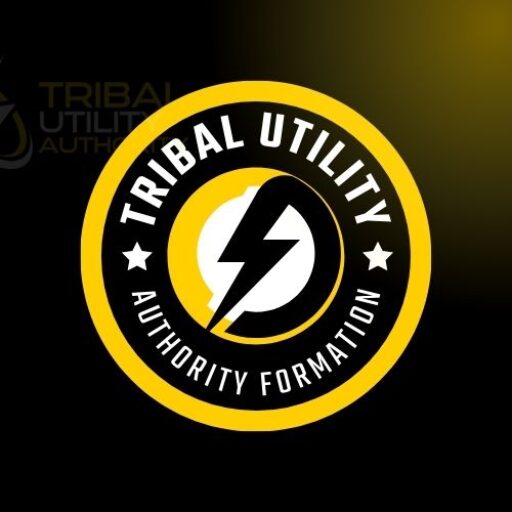Tribal Utility Authority Part XV: Setting Utility Rates and Fees
Tribal Utility Authority | Powered By Red Power Energy
TUA Experts
+1 855-573-3769
Good >Better>Best Options
Setting Utility Rates and Fees
Setting utility rates and fees represents one of the most challenging aspects of tribal utility management. This process requires careful balance between financial sustainability and community affordability while honoring both traditional values and modern utility requirements. Think of rate setting as creating a financial foundation that supports both current operations and future community development.
Cost analysis forms the starting point for effective rate setting. Understanding your true cost of service requires examining both obvious expenses like electricity and chemicals and less visible costs like infrastructure depreciation and administrative overhead. Every aspect of utility operation carries costs that rates must eventually cover. Many successful utilities find that comprehensive cost analysis helps justify rate decisions while ensuring sustainable operations.
Fixed costs remain relatively constant regardless of service levels. These might include debt payments, basic administrative expenses, and minimum staffing requirements. Understanding fixed costs helps determine minimum revenue requirements for sustainable operations. Experience shows that clear identification of fixed costs helps establish base rate components while supporting financial planning.
Variable costs change with service levels and require careful tracking. These include expenses like treatment chemicals, electricity for pumping, and maintenance supplies. Understanding how these costs vary with usage helps develop appropriate rate structures. Many utilities find that detailed variable cost analysis helps create fair rates while maintaining operational flexibility.
Rate structure design determines how costs get distributed among customers. Options range from simple flat rates to complex structures with multiple components. Some utilities use increasing block rates to encourage conservation, while others implement seasonal rates to address varying costs. Consider both operational requirements and community impacts when designing rate structures. Experience shows that well-designed rate structures help maintain both financial stability and customer satisfaction.
Basic service charges cover fixed costs that exist regardless of usage. These charges ensure revenue stability while fairly allocating basic system costs among all customers. Consider both actual fixed costs and community affordability when setting base charges. Many successful utilities find that appropriate base charges help maintain financial stability while providing predictable customer bills.
Usage charges reflect the variable costs of providing service. These might vary with consumption levels, season, or customer class. Understanding usage patterns helps develop appropriate charge structures. Consider both cost recovery needs and conservation goals when setting usage charges. Experience shows that well-designed usage charges help promote efficient resource use while maintaining fair cost distribution.
Customer class definitions affect how rates apply to different types of users. Residential, commercial, and industrial customers often have different service characteristics and cost impacts. Consider both cost of service and community development goals when defining customer classes. Many utilities find that appropriate customer classification helps maintain equitable rates while supporting economic development.
Special rate provisions address unique situations within the community. These might include elder discounts, low-income assistance, or economic development rates. Consider both community needs and financial impacts when developing special provisions. Experience shows that carefully designed special rates help maintain community support while ensuring program sustainability.
Rate study processes provide an analytical foundation for rate decisions. These studies examine costs, usage patterns, and revenue requirements to develop supportable rate recommendations. Consider both technical requirements and community understanding when conducting rate studies. Many successful utilities find that thorough rate studies help justify rate decisions while identifying improvement opportunities.
Community engagement proves crucial for rate-setting success. This involves both explaining rate requirements and gathering community input. Consider both formal consultation processes and informal discussions when planning community engagement. Experience shows that effective community engagement helps build support for necessary rates while identifying community concerns.
Implementation planning ensures a smooth transition to new rates. This involves both technical preparations like billing system updates and community education efforts. Consider both operational requirements and customer understanding when planning rate implementation. Many utilities find that careful implementation planning helps prevent problems while maintaining customer cooperation.
Revenue projections help evaluate rate proposal effectiveness. These should consider various scenarios, including different weather patterns and usage levels. Consider both optimistic and pessimistic projections when evaluating rate proposals. Experience shows that thorough revenue analysis helps ensure rate adequacy while identifying potential risks.
Cost allocation methods distribute various expenses among rate components. This involves both direct cost assignment and sharing of common costs. Consider both fairness and practicality when developing allocation methods. Many successful utilities find that clear cost allocation helps justify rate structures while maintaining equitable cost distribution.
Rate comparison analysis examines how proposed rates compare with other utilities. While each utility faces unique circumstances, comparisons provide useful context. Consider both regional utilities and similar tribal operations when making comparisons. Experience shows that appropriate rate comparisons help evaluate rate proposals while addressing community questions.
Financial policy compliance ensures rates support utility financial requirements. This might include debt service coverage, reserve funding, or capital improvement support. Consider both immediate requirements and long-term needs when evaluating financial compliance. Many utilities find that strong financial policies help maintain utility stability while supporting system sustainability.
Documentation requirements support both current decisions and future reference. Clear records of rate development, approval processes, and implementation help maintain program consistency. Consider both immediate needs and potential future reviews when maintaining documentation. Experience shows that thorough documentation helps defend rate decisions while supporting future updates.
Review schedules ensure rates remain appropriate over time. Regular examination of costs, revenues, and community impacts helps identify needed adjustments. Consider both financial requirements and community circumstances when scheduling reviews. Many successful utilities find that regular rate reviews help maintain financial stability while preventing large sudden increases.
Adjustment procedures provide methods for updating rates when needed. These might address both regular updates and special circumstances requiring immediate changes. Consider both process efficiency and proper oversight when developing adjustment procedures. Experience shows that clear adjustment procedures help maintain rate adequacy while ensuring appropriate review.
Conservation incentives often form part of rate structures. These might include increasing block rates or seasonal pricing to encourage efficient resource use. Consider both conservation goals and revenue stability when developing incentives. Many utilities find that well-designed conservation incentives help manage resource use while maintaining financial sustainability.
Economic development considerations affect rate structure decisions. Rates can either encourage or discourage various types of development within the community. Consider both immediate revenue impacts and long-term community benefits when evaluating development impacts. Experience shows that development-conscious rate setting helps support community growth while maintaining utility stability.
Regulatory compliance ensures rates meet any applicable requirements. While tribal utilities maintain significant rate-setting authority, various regulations might still apply. Consider both tribal and external requirements when developing rates. Many successful utilities find that careful compliance review helps prevent problems while maintaining operational authority.
Future planning ensures rates support long-term utility development. This involves considering both immediate revenue needs and future system requirements. Consider both current operations and planned improvements when developing rates. Experience shows that forward-looking rate setting helps support utility development while maintaining stable operations.
KEEP READING BELOW
WIDE RANGE OF TRIBAL UTILITY SERVICES
Do you need Tribal Solar Help ? Look no further!
Leading experts in Tribal Utility Authority formation, IPP development, and PPA negotiation. Transform your tribe's energy infrastructure with comprehensive solutions backed by decades of experience in Indian Country.
- Tribal Utility Authority Formation
- Independent Power Producer Development
- Power Purchase Agreement Negotiation
- Virtual Tribal Energy Office Implementation
- Energy Program Management




Key Federal Programs and Their Impact
Rural Electrification Administration
Established in 1935, this program was crucial in bringing electricity to rural and tribal lands:
- Provided low-cost loans for infrastructure development
- Supported the creation of tribal electric cooperatives
- Dramatically improved quality of life in tribal communities
- Laid the groundwork for future utility management strategies
Clean Water Act and Environmental Regulations
These federal initiatives had profound implications for tribal utility development:
- Established water quality standards
- Provided funding for water infrastructure projects
- Supported tribal environmental protection efforts
- Created mechanisms for tribal environmental governance
Pioneering Tribal Utility Models
Case Study: Navajo Nation Electrification
The Navajo Nation’s journey to comprehensive electrical infrastructure illustrates the challenges and triumphs of tribal utility development:
- Started with less than 10% electrical coverage in the 1950s
- Developed a comprehensive electrical grid over decades
- Created the Navajo Tribal Utility Authority (NTUA)
- Became a model for other tribal utility management approaches
Other Innovative Tribal Utility Approaches
Different tribes developed unique utility management strategies:
- Tribal electric cooperatives
- Joint management agreements with neighboring jurisdictions
- Innovative funding mechanisms
- Custom infrastructure solutions tailored to specific tribal needs
Challenges in Utility Development
Tribal utility management has faced significant ongoing challenges:
- Limited financial resources
- Complex jurisdictional issues
- Aging infrastructure
- Geographic isolation
- Regulatory complexities
Modern Trends and Future Directions
Renewable Energy Integration
Contemporary tribal utilities are at the forefront of sustainable energy development:
- Solar installations on tribal lands
- Wind energy projects
- Geothermal energy exploration
- Smart grid technologies
Technological Advancements
Emerging technologies are transforming tribal utility management:
- Advanced metering infrastructure
- Digital monitoring systems
- Sustainable energy storage solutions
- Improved water treatment technologies
Conclusion: A Story of Resilience and Innovation
The history of tribal utilities is a testament to indigenous resilience, innovation, and commitment to community development. From traditional resource management to cutting-edge utility systems, tribal communities have consistently adapted and thrived.
Key Takeaways
- Tribal utility management has deep roots in traditional resource practices
- Federal policies have significantly influenced utility development
- Tribes have consistently innovated in infrastructure management
- Modern tribal utilities blend technological innovation with cultural values
As you continue reading, you’ll gain a deeper appreciation for the complex journey of utility development in Indian Country and the ongoing efforts to create sustainable, community-centered infrastructure solutions.
Experienced Tribal Solar Experts
WE USE THE LATEST TOOLS & TECHNOLOGY
We provide reliable and quality electrical services to customers in the area. We specialize in all aspects of residential and commercial electrical work, from new installations and upgrades to repairs and maintenance.
We are a full-service electrical contractor dedicated to providing quality electrical services to both residential and commercial customers. Our team of experienced electricians are highly trained and certified.
TRIBAL UTILITY AUTHORITY CONSULTING
Expert guidance in establishing and managing tribal utility authorities, helping Native American communities achieve energy sovereignty through strategic planning and implementation.
TRIBAL UTILITY PROGRAMS
Comprehensive support for developing and implementing sustainable tribal utility programs that enhance community self-reliance and economic development.
TRIBAL UTILITY AUTHORITY FORMATION
Complete assistance in establishing legally sound tribal utility authorities, including regulatory compliance, governance structure development, and operational framework creation.
TRIBAL UTILITY AUTHORITY OPERATIONS
Professional support for day-to-day utility management, including system maintenance, customer service, billing operations, and performance optimization.
TRIBAL UTILITY AUTHORITY TECHNOLOGY
State-of-the-art technological solutions for modern tribal utility operations, featuring advanced metering, smart grid capabilities, and integrated management systems.
TRIBAL UTILITY AUTHORITY WORKFORCE
Specialized workforce development programs focused on building local capacity through technical training, professional development, and ongoing operational support.
Are you in need of an Tribal Utility Authority Expert ?
Look no further! Our team is here to help.
REACH OUT AND CONNECT
Get a Complete Quote
Your bridge to meaningful communication and personalized assistance, we're here to listen and assist you
Latest Tribal Utility Authority Updates
NAVIGATING IDEAS AND INSPIRATION

Tribal Utility Authority Overview
A tribal utility authority is a specialized administrative entity established by a Native American tribe to manage and operate essential utility services within their tribal

Tribal Utility Authority Formation: Harnessing Tribal Energy Sovereignty
Tribal Utility Authority Formation: Harnessing Tribal Energy Sovereignty Welcome to TribalUtilityAuthority.com, the definitive resource on establishing and operating Tribal Utility Authorities (TUAs) to achieve energy




